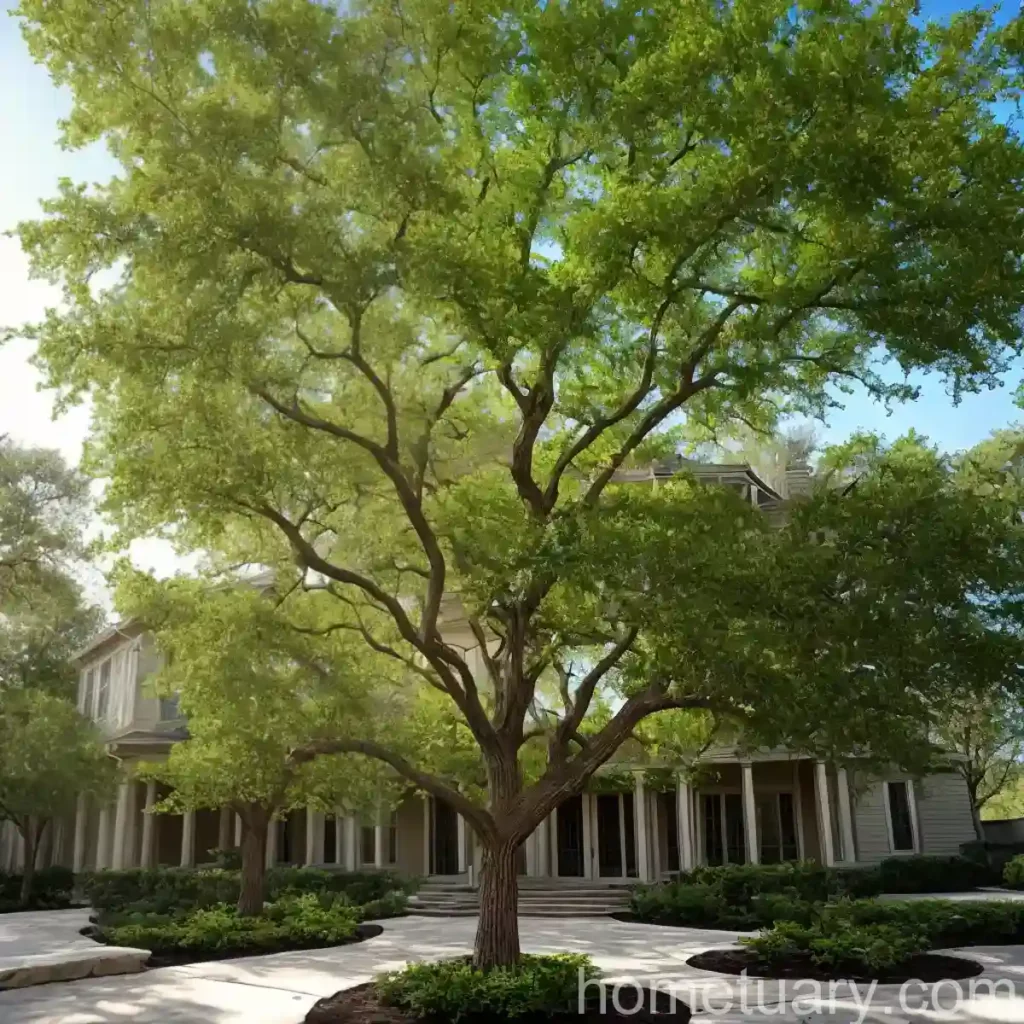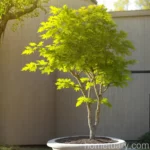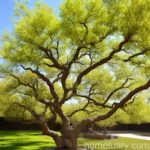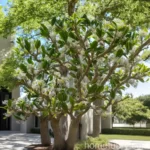The Beautiful and Resilient Post Oak (Quercus stellata)
For centuries, trees have been an integral part of human existence, providing us with oxygen, food, shelter, and a deep connection to nature. Among the diverse array of trees, the post oak (Quercus stellata) stands out as an impressive and valuable species. In this comprehensive guide, we will delve into the fascinating world of post oak trees, exploring their characteristics, care requirements, ecological significance, and much more.
What is the Post Oak (Quercus stellata)?
The post oak, scientifically known as Quercus stellata, is a medium-sized deciduous tree that belongs to the white oak group. This native North American tree is predominantly found in the Eastern United States, thriving in a range of habitats including upland woods, ridges, and well-drained sandy plains. The tree’s common name, “post oak,” is derived from its historical use in constructing fence posts due to its durable and rot-resistant wood.
Key Takeaways – Post Oak (Quercus stellata)
- Scientific Name: Quercus stellata
- Common Name: Post Oak
- Habitat: Eastern United States
- Attributes: Deciduous, Medium-sized
- Notable Feature: Durable wood suitable for fence posts
- Ecological Importance: Provides habitat and food for wildlife
Now, let’s delve deeper into the various aspects of the post oak, including its cultural significance, uses, care requirements, potential diseases, and much more.
Culture
Understanding the cultural requirements of the post oak is crucial for successfully cultivating and maintaining these majestic trees.
Water
- Post oaks are remarkably adaptable to varying moisture levels, demonstrating a good tolerance for both drought and occasional flooding.
- As a general guideline, newly planted post oak trees should be watered regularly for the first couple of years to aid in root establishment. Once established, they are generally self-sufficient.
Sunlight
- The post oak thrives in full sun, requiring at least 6 to 8 hours of direct sunlight per day to support optimal growth and development.
- While they can tolerate partial shade, particularly when young, ample sunlight is essential for their long-term health.
Fertilizer
- Mature post oaks typically do not require regular fertilization in natural settings. However, in urban or highly landscaped environments, soil nutrient levels may benefit from occasional fertilization.
Soil
- Post oak trees are well-suited to a range of soil types, including sandy, loamy, or clay soils, as long as they are well-draining.
- They can tolerate acidic to slightly alkaline soils, with a preference for pH levels ranging from 6.0 to 7.2.
Pruning
Pruning is an essential part of post oak tree care, contributing to their overall health, shape, and longevity.
- Timing: The best time for pruning post oaks is during their dormant season in late winter to early spring, before new growth emerges.
- Objectives: Pruning goals may include removing dead or diseased branches, shaping the tree for aesthetic purposes, or elevating the canopy for clearance.
- Techniques: Proper pruning techniques, including making clean cuts and avoiding excessive pruning, contribute to the tree’s ability to heal effectively.
Propagation
While post oaks can be propagated from seeds, this method is often unpredictable due to variations in seed germination and the tree’s slow growth rate. As an alternative, propagation through hardwood cuttings or root cuttings can be more reliable and produce genetically identical trees.
Container Popularity
Although post oaks are typically grown in outdoor landscapes, they are not commonly cultivated in containers due to their substantial size at maturity. However, if desired, young post oaks can initially be grown in large containers before eventually being transplanted to a suitable outdoor location.
Common Diseases
Despite their resilience, post oak trees are susceptible to certain diseases that can impact their health and vigor. Some common diseases include:
- Oak Wilt: Caused by the fungus Bretziella fagacearum, oak wilt can rapidly kill post oaks by disrupting the tree’s water-conducting vessels.
- Anthracnose: This fungal disease can cause leaf blight and stem cankers, particularly in wet conditions.
- Root Rot: Excessive soil moisture can lead to root rot, affecting the tree’s ability to absorb water and nutrients.
Disease Diagnosis
Early diagnosis of diseases is crucial for implementing effective management strategies and preserving the health of post oak trees. Symptoms such as wilting foliage, leaf discoloration, or unusual stem cankers should prompt a thorough inspection by a certified arborist or plant healthcare professional.
Common Pests
While post oaks are generally robust against pests, they may occasionally face issues with certain insects. Common pests include:
- Gypsy Moth: The larvae of gypsy moths can defoliate post oak trees, particularly during outbreaks.
- Borers: Various wood-boring insects, such as oak borers, can weaken post oaks by tunneling into the tree’s trunk and branches.
Botanist’s Tips
- When selecting a location for planting post oaks, prioritize well-draining soil and ample sunlight to ensure their optimal growth.
- Regular inspections for signs of diseases or pests can help in early intervention and preservation of tree health.
- Proper pruning and training during the early years can shape the tree for desirable form and structure.
Fun Facts
- The wood of post oaks has been historically valued for its durability, making it a preferred choice for fence posts and railroad ties.
- Post oaks typically produce acorns that are an important food source for wildlife, including deer, wild turkeys, and various species of birds and squirrels.
- These trees have a lifespan of 150 to 200 years, showcasing their resilience and longevity in natural ecosystems.
Links to External Resources
For further exploration of post oak trees and related topics, consider the following external resources:
- USDA Forest Service: Post Oak
- The Morton Arboretum: Post Oak
- Lady Bird Johnson Wildflower Center: Quercus stellata
- Missouri Botanical Garden: Quercus stellata
In conclusion, the post oak (Quercus stellata) stands as a remarkable and resilient tree species, contributing to the ecological diversity and cultural heritage of the Eastern United States. By understanding and appreciating the unique characteristics and care requirements of post oaks, we can ensure the preservation and continued enjoyment of these magnificent trees for generations to come.















